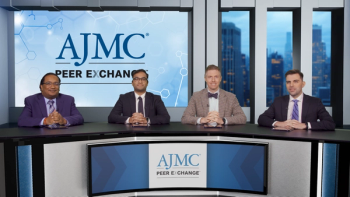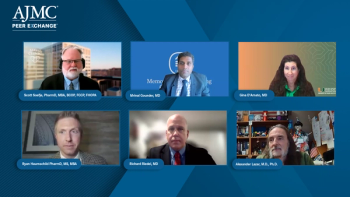
Recognizing Hidradenitis Suppurativa: From First Signs to an Accurate Diagnosis
Panelists discuss the challenges of timely diagnosis and comprehensive management of hidradenitis suppurativa, emphasizing the need for early recognition, multidisciplinary care, and empathy-centered approaches to address the physical, emotional, and social burden of the disease.
Episodes in this series

Hidradenitis suppurativa (HS) is a chronic, inflammatory skin condition that is often underdiagnosed and misunderstood despite affecting approximately 1% of the population in Western countries. Diagnosis is relatively straightforward when clinicians recognize hallmark features: painful nodules, abscesses, and draining tunnels typically occurring in skin folds. However, challenges arise because these symptoms often go unnoticed or misdiagnosed in various care settings, such as urgent care or emergency departments. The recurring nature of lesions, coupled with their location and chronicity, contributes to delays in proper diagnosis and comprehensive management. This results in patients cycling through fragmented health care encounters without receiving the continuity of care needed for optimal outcomes.
The burden of HS extends far beyond physical symptoms. The disease often begins during adolescence, compounding the emotional and social challenges of puberty. Lesions tend to form in intimate areas, leading to embarrassment, social withdrawal, and body image issues. Episodes of pain, spontaneous drainage, and unpredictability significantly interfere with everyday activities, from job interviews and exams to romantic relationships. For many, the psychological toll is severe—affecting self-esteem, mental health, and overall quality of life. The stigma associated with visible symptoms and misunderstanding by non-specialist clinicians can leave patients feeling isolated and neglected by the health care system.
Improving outcomes for patients with HS requires earlier recognition, multidisciplinary collaboration, and personalized care strategies. Key to this is raising awareness among primary care providers and emergency clinicians to recognize HS and refer patients promptly. Early intervention can lead to better symptom control, reduced disease progression, and improved mental and emotional well-being. Additionally, a more holistic view of patient care—one that considers the psychosocial aspects of living with HS—is crucial in forming therapeutic alliances and optimizing long-term disease management. Ultimately, prioritizing timely diagnosis, equitable access, and empathy-centered care will bridge current gaps in HS treatment.
Newsletter
Stay ahead of policy, cost, and value—subscribe to AJMC for expert insights at the intersection of clinical care and health economics.







